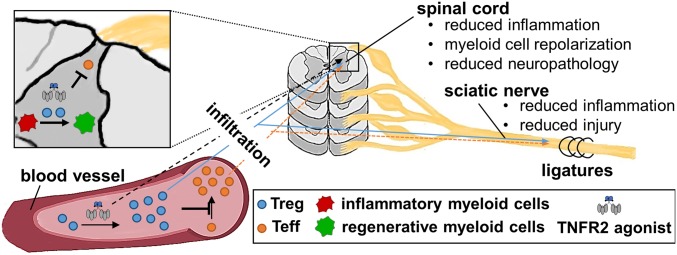Fig. 8.
Exogenous TNFR2 activation reduces peripheral and central inflammation and promotes neuronal recovery via Tregs. Treatment with the TNFR2 agonist EHD2-sc-mTNFR2 leads to increased fraction of Tregs, which suppress injury-induced expansion of peripheral T cells. This results in decreased infiltration of T cells along with enhanced infiltration of Tregs into the sciatic nerve and the dorsal horn of the spinal cord. In the spinal cord, infiltrating Tregs and CNS-infiltrating EHD2-sc-mTNFR2 may further suppress T cell activity, promote polarization of proinflammatory myeloid cells into an antiinflammatory/reperative phenotype, and reduce neuronal injury. These changes ultimately result in alleviation of neuropathic pain.

